A while ago, I came across a delightful word, one that I had never heard before. The word is gruntled and it indicates the opposite sentiment of the familiar expression, disgruntled. Makes perfect sense, doesn't it? And it has a nice ring to it, so I am gruntled to wander through a few highlights of the past few days, with a glance back at Lily (I can hear the applause) a couple of weeks ago!
Lily, Friday 13 November 2020
On 20 November, when we would normally have met Heather and Lily for our regular Friday morning walk, they were away at the family cottage, so we skipped a week.
Friday 27 November 2020
The Mill Race was our chosen spot and it looked very inviting as we began our walk.
I cannot even estimate how many times Miriam and I have meandered along the Mill Race, but even Lily has done it a few times now. It is a pity, in a way, that she will not remember any of it, but we will doubtless be bringing her here for years to come.
Brown Creeper (Certhia americana) is not an unusual bird, but it is not always easy to spot, and most have migrated south by now. A few remain and tough out the winter with us.
Actually, given the weather of late, with bright sunshine day after day and temperatures well above freezing, we are in danger of forgetting what winter is like!
Trees denuded of leaves often present quite a stark image and this mass of branches caught our attention.
Muskrat (Ondatra zibethicus) can generally be easily found along the Mill Race and this individual was snacking on corn.
American Beavers (Castor canadensis) seem to have been exceptionally busy this year, and they are nothing if not ambitious!
They have built up their lodge, and laid in a winter food storage, in the process taking over half the path, and possession is ninth tenths of the law as we well know.
A Blue Jay (Cyanocitta cristata) was puffed out, not to keep warm I might add, for it was several degrees above freezing. Perhaps it was impressed by its own importance!
Mallards (Anas platyrynchos) swam along beside us most of the time, and we remarked to each other that they are truly handsome ducks.
A few leaves still clung to their branches, imparting a splash of brightness to a bare and largely colourless woodland.
European Buckthorn (Rhamnus cathartica) can be found at different points along the trail and this patch seems to attract Northern Cardinal (Cardinalis cardinalis) in great numbers, sometimes as many as a dozen feeding on the berries, taking advantage of easy pickings.
A female was resting up, digesting the last engorgement, waiting to feast again. Buckthorn berries pass rapidly through the bird's digestive tract, so the wait will not be a long one.
Lily's eyes followed all the action - a year from now we will perhaps have taught her the names of the birds and she will be calling them out to us.
Saturday 28 November 2020
For the first time in many weeks I decided to venture a little farther afield, and made off towards Lake Ontario to areas I knew would present no difficulty in maintaining the social distancing required during the pandemic. The change of scenery felt good.
Harlequin Duck (Histrionicus histrionicus) is a rare winter visitor to southern Ontario, and I was delighted to see a pair at Lakefront Promenade in Mississauga. I had great looks at the birds through my telescope but they were a little far out for good photographs, at least with my basic equipment.
Harlequin Duck ♂
Harlequin Duck ♀
Flotillas of Canada Geese (Branta canadensis) sailed by, looking quite splendid in diffused November sunlight, which at times cast a subtle glow upon the water.
Mute Swan (Cygnus olor) is a resident species at Bronte, adding a bit of a regal presence to the harbour, now emptied of boats that have been stored on land for the winter.
Given the balmy weather, no doubt many weekend mariners wished their craft were still available for a last excursion on the lake. It is much easier to take advantage of good weather for a final round of golf than to contemplate putting a sailboat back in the water.
While I was out for the morning, Miriam was visited by a Cooper's Hawk (Accipiter cooperii) which no doubt caused great consternation among the songbirds. She was unable to get a good picture, but this one memorializes the visit.
Given the chance, I am sure that the hawk would have breakfasted on Downy Woodpecker (Dryobates pubescens).
Always a regular in our yard, Mourning Doves of late have become particularly abundant, and for the past few days fifteen of them have congregated together. They are scattered throughout with some in trees, a few along the fence and others on the ground, so it is impossible to encompass them all in one shot, but this will give you an idea.
One individual found a sunny spot to catch the warm rays of the sun and do a little feather maintenance.
A House Finch (Haemorhous mexicanus) and an American Goldfinch (Spinus tristis) were content to feed side-by-side on the feeders.












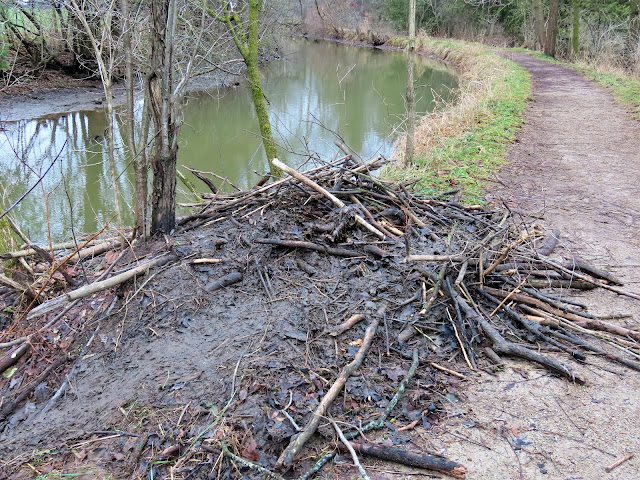












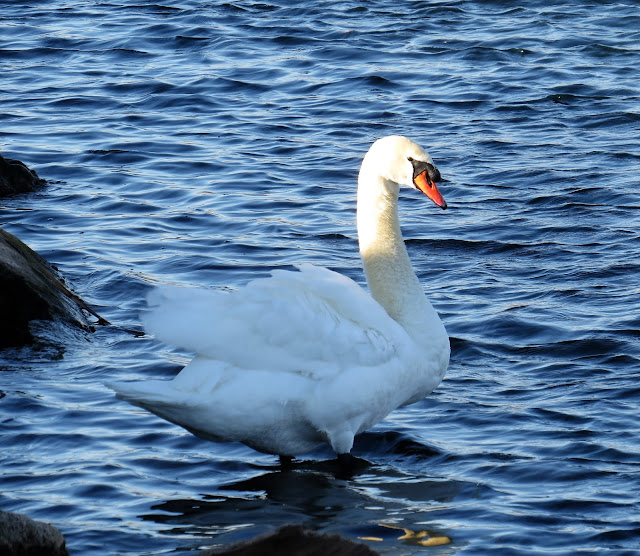




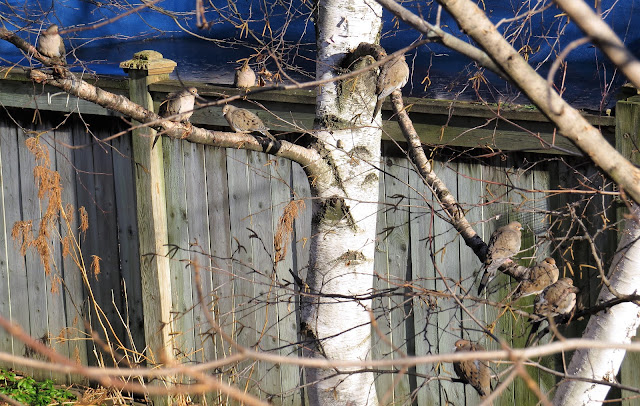


















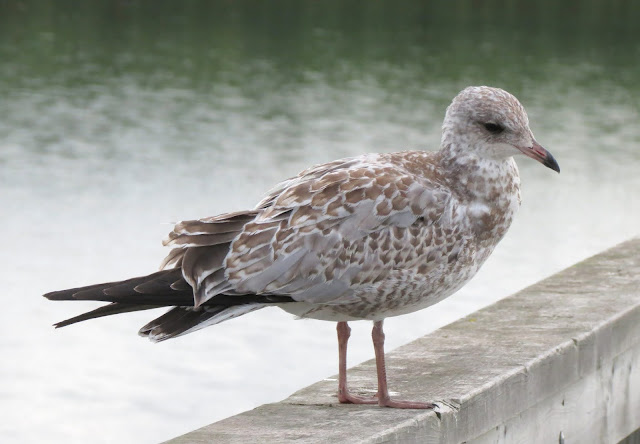






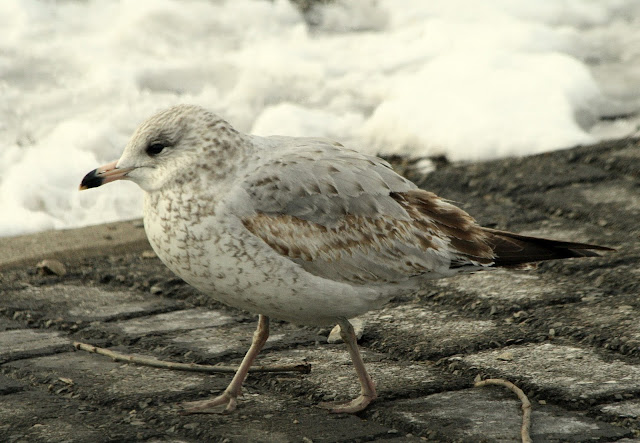








.svg.webp)












